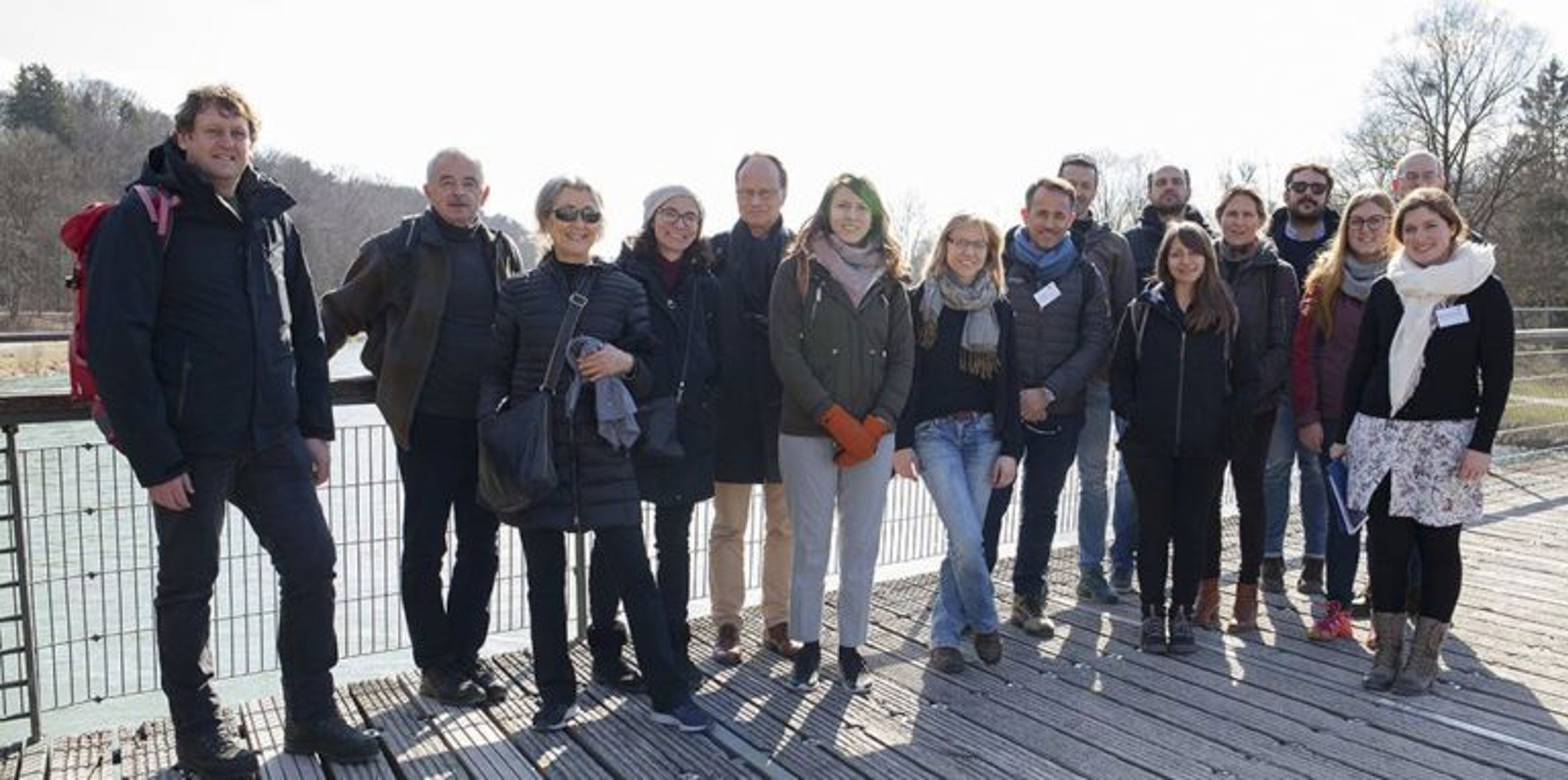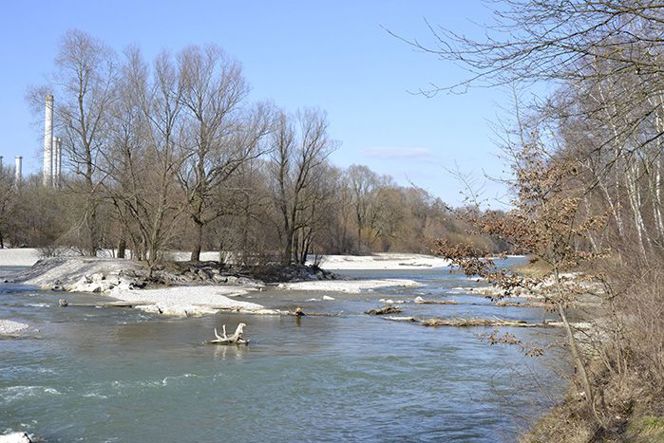First Look and Learn Visit at Isar Concept Case

From 20th to 22nd March 2019, 30 interested invited by TUM visited the Concept Case Isar Basin in order to gain insights and inspiration for the implementation of nature-based solutions.
On three days, the participants were able to get first-hand information about the Isar restoration and its participatory planning processes. Key actors of the Isar restoration presented their participatory approaches and answered the questions of international experts. PHUSICOS project partners visited the restored Isar in Munich, the Sylvenstein Reservoir and the Obernach research institute.
The first PHUSICOS Look and Learn Visit intended a) to provide lessons learned from the Isar concept case considering both the implemented nature-based solutions and local participative processes, b) to give an impulse for the local participatory processes, c) to critically reflect the technical background of the nature-based solutions and the effect of gray infrastructure for flood protection, and d) to connect with other research projects dealing with NBS at Bavarian rivers.
First, lessons learned from the Isar concept case considering both the implemented nature-based solutions and local participative processes were provided in order to help project partner work. Therefore, on the first day, key actors of the Isar restoration in Munich (Isar-Plan) gave presentations on the project and its participative process. In his presentation, Walter Binder (former employee of the Water Management Office) pointed out the challenges of river restoration in Bavaria and specifically those of the Isar River. He presented which guiding principles can be used and which solutions could be implemented. He also referred to emerging challenges post-restoration, e.g., intensive recreational uses with related littering problems.
Afterward, Klaus Bäumler presented the development of the Isar from a canalized river without water to a living alpine river. In the afternoon, a field trip was organized to the Isar River in the city of Munich. Guided by Dr. Aude Zingraff-Hamed (TUM) and Robert Harfmann (Water Management Office Munich), the participants were able to see the implemented measures themselves and get informed about the remaining issues as the conflict between nature conservation and recreational uses.
On the third day, Oliver Engelmayer (Landscaper at BME) presented the various planning and implementation challenges of the Isar-Plan. The insights on the Isar-plan increased the awareness of international experts on such complex restoration projects and participative process.
Second, impulses for the PHUSICOS participatory processes were provided through both practical experiences of the Isar partners and conceptual inputs from WP3. Walter Binder reported on the Mühltal initiative and how the cooperation of the different stakeholders led to a successful implementation of a nature-based solution. Providing a retrospective view, Klaus Bäumler (Münchner Forum) presented the development of the participatory process that led to the Isar Plan and pointed out the process to jointly plan measures. He emphasized both the importance of civic engagement to drive the project and the intensive involvement of various stakeholders from civil society to gain acceptance.
On the third day, Dr. Gerd Lupp (TUM) gave conceptual inputs on planning and development of nature-based solutions using the Living Lab approach. The participants discussed the various experiences and concluded that participatory processes need to reflect local specifications and have to be handled with flexibility.
Third, to critically reflect the technical background of the nature-based solutions on the Isar and the limited effect of grey infrastructure on flood protection, an excursion to the Upper Isar was organized on the second day. Dr. Tobias Lang (Water Department Weilheim) explained that the Sylvenstein Reservoir also was built as a measure to compensate the water take-off at Krüner weir and to ensure the minimal water flow securing some ecological and social functions of the lower Isar River sections.
However, the reservoir also plays an essential role in the flood protection of the cities of Bad Tölz and slightly mitigate flood risk in Munich. Nevertheless, the ability to buffer flooding is limited in heavy precipitation situations, since the reservoir can only influence 5% of the Isar catchment area. For efficient flood protection, therefore, the interplay of various technical solutions such as hydraulic engineering measures and river restoration measures is of particular importance. Therefore, the visit to the Sylvenstein illustrates the challenges of water management in densely populated areas.
In the afternoon, the project partners visited the Obernach research facility and were able to gain insights into how hydrological modeling is carried out. Prof. Arnd Hartlieb (TUM) explained to the participants how the results of scale model experiments and digital simulations could support the development of efficient and cost-effective solutions.
Finally, to connect with research projects dealing with nature-based solutions at Bavarian rivers, Stefan Giehl (TUM) and Johanna Springer (TUM) presented the Inn retention room and the Danube Floodplain project. They gave an overview of the research questions they share with PHUSICOS: How can space be created for NBS implementation? How to gain acceptance? How to test efficiency? How do we select the measures that are the best today and in the future?
During the three days, the participants were able to gather knowledge to be upscaled into the demonstrator cases. TUM project partner plan to organize the next Look and Learn Visit in May 2020 to get more insights on nature-based solutions and to exchange on the possibilities of land and forest management in order to reduce natural hazards. Further information and invitations are expected to be given by autumn 2019.

